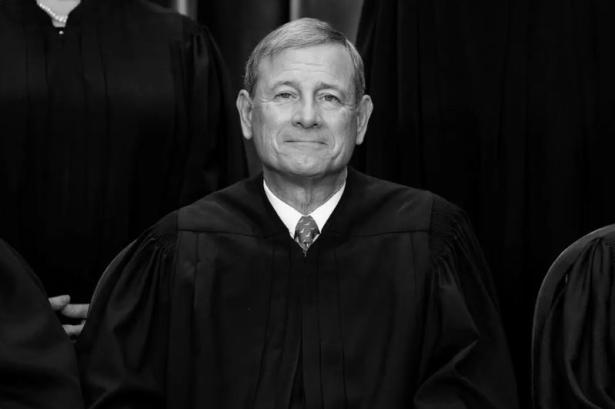In 2007, Chief Justice John Roberts wrote the majority opinion in Parents Involved v. Seattle School District No. 1, which struck down race-based “tiebreakers” in school admissions programs in Seattle and Louisville, Ky. “The way to stop discrimination on the basis of race,” Roberts famously wrote, “is to stop discriminating on the basis of race.”
Last week, in his opinion for the majority in Students for Fair Admissions v. Harvard, which ended race-based affirmative action in college admissions, Roberts echoed his earlier self with a similar assertion which I also discussed in my column on Friday: “Eliminating racial discrimination means eliminating all of it.”
Both lines encapsulate Roberts’s view that the Constitution is colorblind and sees no racial distinctions.
One thing I noticed, reading both opinions, is that while Roberts may mention “race,” “discrimination based on race” and “racial discrimination,” he doesn’t discuss racism. In both opinions, Roberts underpins his argument with the court’s decision in Brown v. Board of Education.
“Before Brown, schoolchildren were told where they could and could not go to school based on the color of their skin,” the chief justice wrote in Parents Involved. Similarly, in Students for Fair Admissions, Roberts writes that in Brown, the court had finally determined that “The time for making distinctions based on race had passed.”
The issue here is that Brown v. Board of Education was not about states making distinctions based on race. The question before the court was whether state governments could use racial classifications to separate Black Americans from white Americans in order to deny rights to the former and extend privileges to the latter. The question, in other words, was whether racism was a legitimate state interest.
“Brown did not raise the issue of whether states could use race-conscious classifications to integrate schools,” wrote the legal scholar Joel K. Goldstein in a 2008 analysis and critique of Roberts’s opinion in Parents Involved. “With one pertinent exception, the briefs and oral arguments focused entirely on the way in which the government then used racial classifications — to segregate and demean blacks.”
I want to highlight Chief Justice Roberts’s avoidance of racism as a prime example of “racecraft,” the term coined by the historians Karen and Barbara Fields to describe the transmutation of a set of actions (racism) into a set of qualities or characteristics (race).
Racecraft, the Fieldses write in “Racecraft: The Soul of Inequality in America,” “transforms racism, something an aggressor does, into race, something the target is, in a sleight of hand that is easy to miss.” They offer a useful and pertinent example:
Consider the statement “Black Southerners were segregated because of their skin color”— a perfectly natural sentence to the ears of most Americans, who tend to overlook its weird causality. But in that sentence, segregation disappears as the doing of segregationists, and then, in a puff of smoke — paff — reappears as a trait of only one part of the segregated whole.
This, you might say, is the Roberts two-step. He takes racism, a system of subjugation and social control, and removes the racists. What’s left is the mark of racism, that is, race. A landmark case about the legitimacy of race hierarchy — Brown v. Board of Education — becomes, in Roberts’s hands, a case about the use of race in school placement.
To remove racism and racists from the equation is to pretend that there’s no social force to push against — no inequality to rectify. Instead, there is only a quality, race, that Roberts says the Constitution cannot recognize.
The result is a society that continues to reinforce and reconstitute these previous patterns of domination, except hierarchy is now hidden from law, and what is a feature of society becomes, instead, a quality of the people afflicted.
[Jamelle Bouie is a columnist for the New York Times and political analyst for CBS News. He covers history and politics.
Prior to the Times, Jamelle was chief political correspondent for Slate magazine. And before that, he was a staff writer at The Daily Beast and held fellowships at The American Prospect and The Nation magazine. He attended the University of Virginia, where he graduated with a degree in political and social thought, and government.]


Spread the word